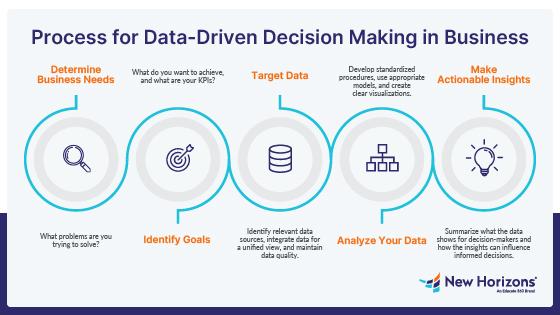In the ever-evolving landscape of digital marketing, where competition is fierce and attention spans are fleeting, the art of SEO content writing has emerged as a vital skill for anyone looking to make their mark online. Mastering this craft means more than just sprinkling a few keywords into an article; it requires a fine balance of creativity, strategy, and an understanding of what drives search engine algorithms. As the digital realm continues to grow, so too do the strategies that enable writers to connect with audiences while satisfying the intricate demands of search engines. In this article, we will explore effective approaches that demystify the process of SEO content writing, providing you with the tools necessary to enhance your visibility, engage your audience, and ultimately, achieve success in the bustling world of online content. Whether you’re a seasoned writer or just starting your journey, these strategies will empower you to create compelling content that resonates and ranks. Join us as we uncover the secrets to mastering SEO content writing in a landscape where content is undeniably king.
Understanding Keyword Research to Drive Content Relevance
Effective keyword research is the backbone of relevant and engaging content. By identifying the terms and phrases that your target audience is using, you can tailor your content to meet their specific needs and interests. This involves analyzing various data sources, including search engines, forums, and social media, to gather insights into trending topics and frequently asked questions. Additionally, utilizing tools like Google Keyword Planner and SEMrush can help you discover keywords with high search volume and low competition, enhancing your chances of ranking higher in search engine results.
When conducting keyword research, consider the following essential factors to ensure your content resonates with readers:
- Relevance: Choose keywords that directly relate to your content’s main theme.
- User Intent: Understand what users are looking for when they search for particular keywords.
- Long-Tail Keywords: Target specific phrases that are less competitive but highly relevant to niche topics.
| Keyword Type | Description | Example |
|---|---|---|
| Short-Tail Keywords | Broad terms with high search volume. | “SEO” |
| Medium-Tail Keywords | More specific phrases with moderate search volume. | “SEO strategies” |
| Long-Tail Keywords | Highly specific phrases with lower search volume but higher conversion potential. | “best SEO strategies for small businesses” |

Crafting Compelling Headlines that Capture Attention
Headlines are the gatekeepers of your content, and making them compelling is essential for capturing your audience’s attention amidst the digital noise. When crafting headlines, consider leveraging powerful words that evoke emotion and curiosity. Aim for clarity while incorporating relevant keywords that hint at the content’s value. Effective headlines often exhibit a sense of urgency or offer a clear benefit, urging readers to delve deeper. Here are some techniques to enhance your headlines:
- Utilize Numbers: Lists attract attention and provide clarity.
- Ask Provocative Questions: Engaging questions pique curiosity.
- Highlight Benefits: Clearly convey what the reader will gain.
- Create Intrigue: Use phrases that spark interest but reveal just enough to entice.
Moreover, creating a sense of exclusivity can amplify your headlines’ appeal. Consider blending different styles to suit your audience’s preferences. Testing various headlines for effectiveness can lead to improvements in engagement metrics. An easy way to analyze their performance is through a simple table showcasing different headline variants and their respective click-through rates (CTR) over a set period:
| Headline Variant | Click-Through Rate (%) |
|---|---|
| 5 Secrets to Mastering SEO | 14.2 |
| Is Your SEO Strategy Working? | 12.5 |
| Unlock the Power of SEO Content | 16.8 |
| Why SEO is Your Key to Success | 10.3 |

Optimizing On-Page Elements for Enhanced Search Visibility
To capture the attention of both search engines and users alike, it is essential to focus on the core components of your web pages. This involves refining elements such as title tags, meta descriptions, and header tags. By deliberately incorporating your primary keywords into these tags, you enhance the likelihood of your content being displayed prominently in search results. Furthermore, maintaining an engaging and concise meta description acts as a persuasive invitation for users to click on your link, while using a clear hierarchy in your header tags improves the overall readability and structure of your content.
Additionally, optimizing the visual aspect of your page can significantly contribute to a better user experience and improved search visibility. Utilize image alt attributes to describe your visuals, as this not only aids in search engine indexing but also enhances accessibility. Incorporating internal links within your content can guide visitors to related pages, fostering longer dwell times on your site. Below is a simple table showcasing effective on-page elements:
| Element | Description | Optimization Tip |
|---|---|---|
| Title Tag | Defines the title of the web page | Keep it under 60 characters |
| Meta Description | Summary of the page content | Use actionable language and limit to 160 characters |
| Header Tags | Organizes the content structure | Use only one H1 tag per page |
| Image Alt Attributes | Describes images for search engines | Be descriptive yet concise |

Utilizing Data-Driven Strategies for Continuous Improvement
Data-driven strategies play an essential role in refining SEO content writing by leveraging analytics to understand user behavior, optimize content performance, and improve search rankings. By analyzing metrics such as bounce rates, average time on page, and click-through rates, writers can identify successful content elements and areas needing enhancement. Key insights from data can inform decisions about:
- Keyword Optimization: Implementing high-performing keywords that resonate with your target audience.
- Content Structure: Adjusting headings and formatting based on audience engagement patterns.
- User Intent: Creating content that fulfills what users are searching for, leading to higher satisfaction and retention.
Moreover, integrating tools like Google Analytics and search console provides real-time feedback that enables content creators to make informed adjustments to their writing strategies. A/B testing different headlines or call-to-action phrases can reveal what drives user engagement and conversions. Equally important is utilizing social media analytics and feedback to guide topic selection and determine content types that resonate with your audience. Below is a simplified representation of effective data sources and their purposes:
| Data Source | Purpose |
|---|---|
| Google Analytics | Track user behavior and engagement metrics. |
| Keyword Research Tools | Identify high-demand keywords. |
| Social Media Insights | Gauge audience preferences and content effectiveness. |
In Retrospect
As we draw the curtain on our exploration of mastering SEO content writing, it becomes clear that success in this dynamic landscape is fueled by a blend of creativity, strategy, and adaptability. Each keyword is not just a search term; it’s a doorway to connection, engagement, and value. By implementing the strategies discussed, you’re not merely crafting content for search engines—you’re weaving narratives that resonate with readers, inviting them into a world where information meets inspiration.
Remember, the digital realm is ever-evolving. What works today may shift tomorrow, but by continuously honing your skills and remaining attuned to industry shifts, you’ll not only keep your content relevant but also cultivate a loyal audience eager for what you have to share. So, step into this journey with confidence. Your words hold the power to inform, inspire, and elevate the online experience. Go forth and write with purpose—your mastery of SEO content writing begins now.






